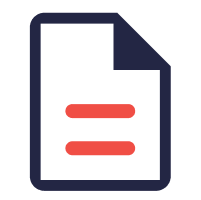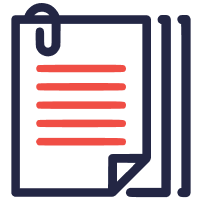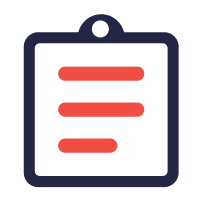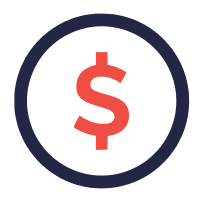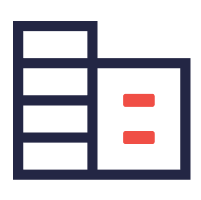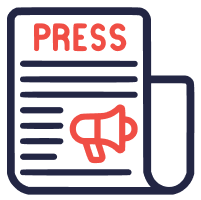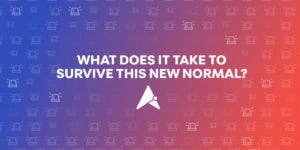 If you would like to read this content in PDF form, download here.
The numbers keep coming in and they’re not looking good. Over 22 Million American jobs lost. GDP contraction of over nearly 5%. Social distancing extended.
How can CEOs and CROs manage revenue risk and recalibrate sales strategy in the face of this unforeseen market turmoil? Bain Consulting recently released a detailed report on how to do so titled “Preserving Revenues in B2B Markets as Covid-19 Spreads” where they say:
If you would like to read this content in PDF form, download here.
The numbers keep coming in and they’re not looking good. Over 22 Million American jobs lost. GDP contraction of over nearly 5%. Social distancing extended.
How can CEOs and CROs manage revenue risk and recalibrate sales strategy in the face of this unforeseen market turmoil? Bain Consulting recently released a detailed report on how to do so titled “Preserving Revenues in B2B Markets as Covid-19 Spreads” where they say:
“Executives responsible for revenue—CEOs, GMs, and heads of sales—must act decisively to soften the blow and adjust to uncertain times. While no one can precisely predict the longer-term effects of this crisis, we do know that earlier 2020 sales forecasts are now obsolete.”
- Bain & Co.
Bain then points out 5 specific problems and solutions to these problems. But how do you apply these principles in action? This is where Artificial Intelligence can help. The famous American fighter pilot John Boyd once said:“Whoever can handle the quickest rate of change is the one who survives.”Taking smart actions now with Artificial Intelligence can help you prepare better. Building on Bain research, we’ve created a guide to help you come out of this crisis with strength using the power of Predictive Artificial Intelligence.
 I. Teams Misaligned and Lost? Use Revenue Winrooms.
I. Teams Misaligned and Lost? Use Revenue Winrooms.
Working from home is the new normal. From team SKO’s, on-site demos, and field sales, revenue teams have moved all operations online. How do you keep up velocity and success virtually? Bain & Co. advocates for setting up revenue “winrooms” where sales leaders can plan and execute on revenue preservation during these uncertain times.
“A win room serves as a clearinghouse to absorb analysis, add real-time intelligence from the field, rapidly deploy & reorient people to critical areas. Companies can also use the win room as a laboratory to see what works best”
- Bain & Co.
Such winrooms serve as a virtual collaboration space to track deal activity, drawing in other Go to Market members beyond Sales, such as Customer Success, Marketing, or Legal, for help when needed, and ensuring no deals that are on track for success slip up. Aviso helps with this through AI powered deal, forecast, and collaboration rooms in the form of an integrated workspace. These rooms bring the best of Zoom, Slack, and Chatter like tools while keeping end-to-end encryption and also augmenting the collaboration experience with AI insights alongside. They also involve collaboration tools such as live chat, live video, file-sharing, and ‘To-Dos’ message prioritization.
 However, in times of rapid change, just digital collaboration is not enough. During remote work, teams suffer from deeper cognitive biases. Good news looks better than it should and bad news often doesn’t enter a discussion unless someone brings it up. These biases can compound and spread across CRM, forecast calls & deal reviews, and follow up actions.
Take CRM, where reps may enter overly optimistic numbers. In forecast calls, managers may choose to only talk about “safe deals.” And in daily actions, reps may choose to communicate with prospects who are friendly but aren’t equipped with decision making power, versus prospects with the highest propensity to help close a deal. This is where advanced AI based transcription, manager-rep coaching, and deal actions come into play.
Aviso Smart Transcription uses NLP to summarize and generate highlights of forecast calls and deal reviews, with AI insights into areas of concern, and post-call summary and actions.
However, in times of rapid change, just digital collaboration is not enough. During remote work, teams suffer from deeper cognitive biases. Good news looks better than it should and bad news often doesn’t enter a discussion unless someone brings it up. These biases can compound and spread across CRM, forecast calls & deal reviews, and follow up actions.
Take CRM, where reps may enter overly optimistic numbers. In forecast calls, managers may choose to only talk about “safe deals.” And in daily actions, reps may choose to communicate with prospects who are friendly but aren’t equipped with decision making power, versus prospects with the highest propensity to help close a deal. This is where advanced AI based transcription, manager-rep coaching, and deal actions come into play.
Aviso Smart Transcription uses NLP to summarize and generate highlights of forecast calls and deal reviews, with AI insights into areas of concern, and post-call summary and actions.
 Having advanced digital collaboration tools to align Go-to-Market team members and recording all conversations adds a strong layer of vigilance into GTM team activities.
In addition, Aviso can also help measure how actual sales rep activities including emails, calendar meetings, and phone calls to prospects are being executed on the ground.
Aviso Activity Intelligence and Relationship Maps bridge the gap between deal actions and results. They help deep dive into individual deals to see deal history, scheduled meetings, most and least engaged contacts, contact relationship map, and deal interactions over time. Aviso’s time-series database allows us to then look at rep and team activity as additional leading indicators to help both improve forecast accuracy and deal guidance.
Having advanced digital collaboration tools to align Go-to-Market team members and recording all conversations adds a strong layer of vigilance into GTM team activities.
In addition, Aviso can also help measure how actual sales rep activities including emails, calendar meetings, and phone calls to prospects are being executed on the ground.
Aviso Activity Intelligence and Relationship Maps bridge the gap between deal actions and results. They help deep dive into individual deals to see deal history, scheduled meetings, most and least engaged contacts, contact relationship map, and deal interactions over time. Aviso’s time-series database allows us to then look at rep and team activity as additional leading indicators to help both improve forecast accuracy and deal guidance.

II. Past Trends & Data Irrelevant? Use Predictive AI Forecasting.
With COVID-19, previously done revenue forecasts are now unreliable and need to be recalculated to include the changes and impacts this global crisis has brought.“Sales forecasts for 2020 just became obsolete. Commercial organizations must reassess expected revenues under a much broader range of scenarios."
Your forecasting reassessment shouldn’t be on an Excel or Google spreadsheet. With that approach, it would be nearly impossible to forecast during COVID-19 due to the large amount of rapidly shifting variables constantly influencing potential revenue outcomes. This is where predictive analytics rules. According to a report Bain released late last year,- Bain & Co.
“traditional pipeline management relies heavily on the sales rep’s input...by contrast, analytics-based pipeline scoring applications such as Aviso can independently assess the probability that a deal will close based on modeling the attributes of comparable past deals won or lost.”
- Bain & Co.
Aviso’s AI team has recalibrated AI forecasting scores to take into account pandemic changes and trends to help you reassess forecasts including multiple new indicators.
III. Recalibrating Revenue Source? Use Surge, Secure, At-Risk.
Just like your past aggregate forecasts were thrown out the window, deal-level predictions are similarly at risk. Taking time to scrutinize the deals in your pipeline based on the following methodology will be crucial to efficient deal execution. Bain has a 3 part strategy for safety & survival:- Surge for products that now might be in higher demand. For e.g. if you are an industrials company, Humidifiers may be in greater demand through the rest of 2020 versus only in seasonal demand.
- Secure for solid revenue such as contractual subscriptions from longtime customers. For e.g. your top 2 customers may all be in Healthcare and may still be open to multi-year contracts, so you could lock in more solid revenue with them.
- At-Risk for commitment and consistency, but no contract. For e.g. your Central US sales leader may be committing 7 deals with 90% probability of winning in your CRM, but no conversations have happened on 3 of those deals since COVID-19 started.
- Surge → Upside Deals. These are deals that are currently not in your forecast but which our AI models identify as highly likely to close if pursued.
- Secure → Deals in Focus. These are deals that are in your forecast and our AI models agree that they should be there.
- At-Risk → Deals at Risk. These deals are in your forecast but our AI models have flagged them as not likely to close. We suggest you remove them from forecast.

IV. Suspect Pipeline? Use AI to Find New Pipe and Convert Better.
COVID-19 has induced a unique market in which classic recessionary issues relating to liquidity and capital have extended to the consumer economy. Social distancing has disrupted labor participation and productivity growth. As a result, buyers are re-evaluating their purchasing intent in light of budget cuts or uncertainty and pipeline reports are no longer accurate. Bain recommends inspecting your entire pipeline to keep the most critical deals moving forward.
As a result, buyers are re-evaluating their purchasing intent in light of budget cuts or uncertainty and pipeline reports are no longer accurate. Bain recommends inspecting your entire pipeline to keep the most critical deals moving forward.
“Adjust pipeline percentages and run scenarios with more divergent outcomes. After all, an opportunity with 80% probability remains $0 until it converts.”
- Bain and Co.
AI based pipeline analytics can help with objective, unbiased inspection. Comparing start of the quarter pipeline and new pipeline added to ending pipeline predictions can reveal when and where you need to strength revenue strategy. Use Aviso to inspect the pipeline of future quarters with advanced pipeline analytics. Playing the long term optimization game is key to sustained revenue; see if you’re on track to creating sufficient pipeline one, two, and three quarters out. To round the process out, find out if your pipeline is the optimal mix of opportunities that will gear your team for success.
Use Aviso to inspect the pipeline of future quarters with advanced pipeline analytics. Playing the long term optimization game is key to sustained revenue; see if you’re on track to creating sufficient pipeline one, two, and three quarters out. To round the process out, find out if your pipeline is the optimal mix of opportunities that will gear your team for success.


V. Haywire Spending? Draw an Objective Spend Map.
Bain recommends mapping out your target market’s spend on good and services in your industry to better understand“Create a map of how much each customer spends in your market, and open opportunities to capture more of that spending.”
- Bain and Co.
To make this technique more effective, we suggest making a spending map of your own organization. Doing an audit of software licenses, for example, typically reveals a surprising amount of unuse. A silver lining of a major system shock like this one is the opportunity to reduce internal spending on unused, out of date software. As a case study, take a look at this spread of the top spending by category of sales and marketing technology:
Source: https://zylo.com/blog/saas-spending-trends-vs-expenditures/
Our research shows that cutting CRM usage and cost analysis can help optimize spend reduction by 20-30%. Eliminating non-essential licenses can immediately aid this effort. These users -- usually found on Procurement, Legal, Operations, and Leadership -- only use CRM a few times a year, or not at all. The data they need can still be surfaced to them via an AI that not only serves their raw data needs, but also gives them insights and actions.

















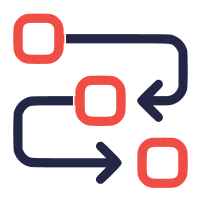 BY USECASES
BY USECASES
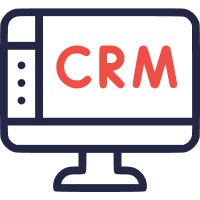 BY CRM INTEGRATION
BY CRM INTEGRATION
 COMPARE
COMPARE
